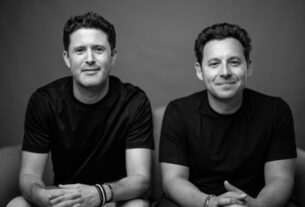Circle K had already been delivery partners with DoorDash for two years when its parent company, Alimentation Couche-Tard, announced in April it was leading a $25 million funding round for San Francisco-based Food Rocket, another — but much smaller — ultrafast delivery startup.
Both companies let it be known at the time that as part of the financing, Food Rocket was working with Circle K to improve its e-commerce and delivery service. From there, the partnership took off.
Weeks later, Food Rocket disclosed plans to open a fulfillment center in Chicago co-located with a new Circle K store, and offer 15-minute delivery of products sold by both companies. A month after that, Food Rocket tapped Couche-Tard’s vice president and controller, Guillaume Leger, to join its board of directors. Most recently, at the end of November, Food Rocket officially launched delivery at two of Circle K’s c-stores in Charlotte, North Carolina. This includes up to 7,000 SKUs available, with a focus on grocery and convenience products from the retailer, in addition to Food Rocket’s proprietary food and drinks.
But Food Rocket isn’t just focused on food and convenience items. The company has its sights on many “potential partners” that offer different products, Food Rocket CEO Vitaly Alexandrov said in an interview.
“Our core identity is to deliver everything to customers, very fast,” he said. “It could be our own items like groceries or alcohol, or it could be items from our potential partners, like a new iPhone [or a] new Nike drop.”
At a time when ultrafast delivery companies are losing traction as they face funding woes and stiff competition, Food Rocket — with the help of Circle K and Couche-Tard — appears to be moving full-steam ahead.
“We want to be more than a grocery or alcohol delivery company,” Alexandrov said. “We want to build the largest last-mile delivery infrastructure.”
Building the infrastructure
In an interview with Grocery Dive in May, Kevin Lewis, executive vice president and chief marketing officer for Couche-Tard, compared Circle K’s relationship with Food Rocket to how the retailer operates in its Carolinas division.
Lewis noted that Circle K’s business unit leaders each run hundreds of stores independently from Circle K’s corporate team, allowing these locations to become “super local” while having the same incentives as all Circle K stores globally. These managers are then expected to share knowledge and information with colleagues in other regions, and Lewis’ job is to “stitch together” each of these business units globally, he said.
This strategy — which Lewis called “structured entrepreneurship” — is how Circle K is working with Food Rocket.
“I’m playing the same role that I might do [in] our southeast business unit now with Food Rocket,” Lewis said. “That is the model here. We’re treating Vitaly [Alexandrov] as if he’s one of our business unit leaders.”
Circle K’s existing infrastructure was a big reason Food Rocket wanted to work with the retailer in the first place, Alexandrov said. He said he realized that “it’s hard to win” as an ultrafast delivery company without solid infrastructure — and because of this, other delivery companies try to build their own from scratch by investing billions of dollars.
In partnering with Circle K, Food Rocket didn’t need to build its infrastructure from the ground up, Alexandrov said. Instead, it leveraged Circle K’s, which includes more than 7,000 c-stores in the U.S.
“If you want to build like the largest quick-commerce player, you have to have the infrastructure,” he said. “We understood that this is competition, not just in terms of trying to acquire customers with [affordable] prices, but about how close you can be to the customer. Circle K has this covered.”
Courtesy of Food Rocket
Beyond the infrastructure, Alexandrov noted Circle K’s “purchasing power” as one of the reasons Food Rocket was interested. While Food Rocket has its own products and makes food in house, being able to work within Circle K’s portfolio gives it more options, he said.
“We’re starting to leverage their purchasing power and their contracts with their current suppliers,” Alexandrov said.
Moreover, since Food Rocket is offering many of Circle K’s products that need licensing — such as alcohol — they’ve avoided needing to apply for those licenses, which many other delivery companies struggle with, Alexandrov said.
Focused on efficiency
An important sidenote in Food Rocket and Circle K’s partnership is the difficulty ultrafast delivery companies have had expanding in the U.S. due to high operating costs, falling e-commerce sales and intense competition. These headwinds have caused many such companies to burn through their investment capital.
What began as a boom in early 2021 with companies like Gorillas, Getir and Jokr rapidly growing in urban cities hit a major speed bump. Within months, several ultrafast delivery startups had ceased operations, while others laid off large portions of their staff.
After becoming one of the biggest companies in the ultrafast delivery space over the past few years, Gopuff went through three separate layoffs — letting go of thousands of employees in the process — this year and cut back its U.S. fleet of small warehouses, which deliver convenience items to consumers in around 30 minutes or less. When the layoffs began, Gopuff’s founders said the company was focused on accelerating its path to profitability, and said it planned to start turning a profit in around two years.
When asked how Food Rocket plans to avoid similar pitfalls, Alexandrov, again, referred to the company’s infrastructure.
He noted that a lot of ultrafast delivery companies often try to “find the right model” of operations, and usually resort to growing “as fast as possible” to do so. But it’s this rapid growth — and heavy amount of investing — that has led to their struggles, he said.
“We decided not to make that mistake,” he said. “We decided we’ll be a little bit slower because we’re not growing as fast as all these guys, but we will be much more efficient.”
By taking its time, Food Rocket is focusing more on improving its AI-enabled technology and laying the groundwork in its current areas of operations. This means spending time finding the “right business model” and the balance between various delivery times and customer satisfaction — by being “super focused on efficiency,” Alexandrov said.
“You have to make [the business] profitable, [and] after that you can scale,” he said. “All our competitors, they started to scale, but then they realized [they] should work on efficiency, but unfortunately, they didn’t have enough money to do that.”



